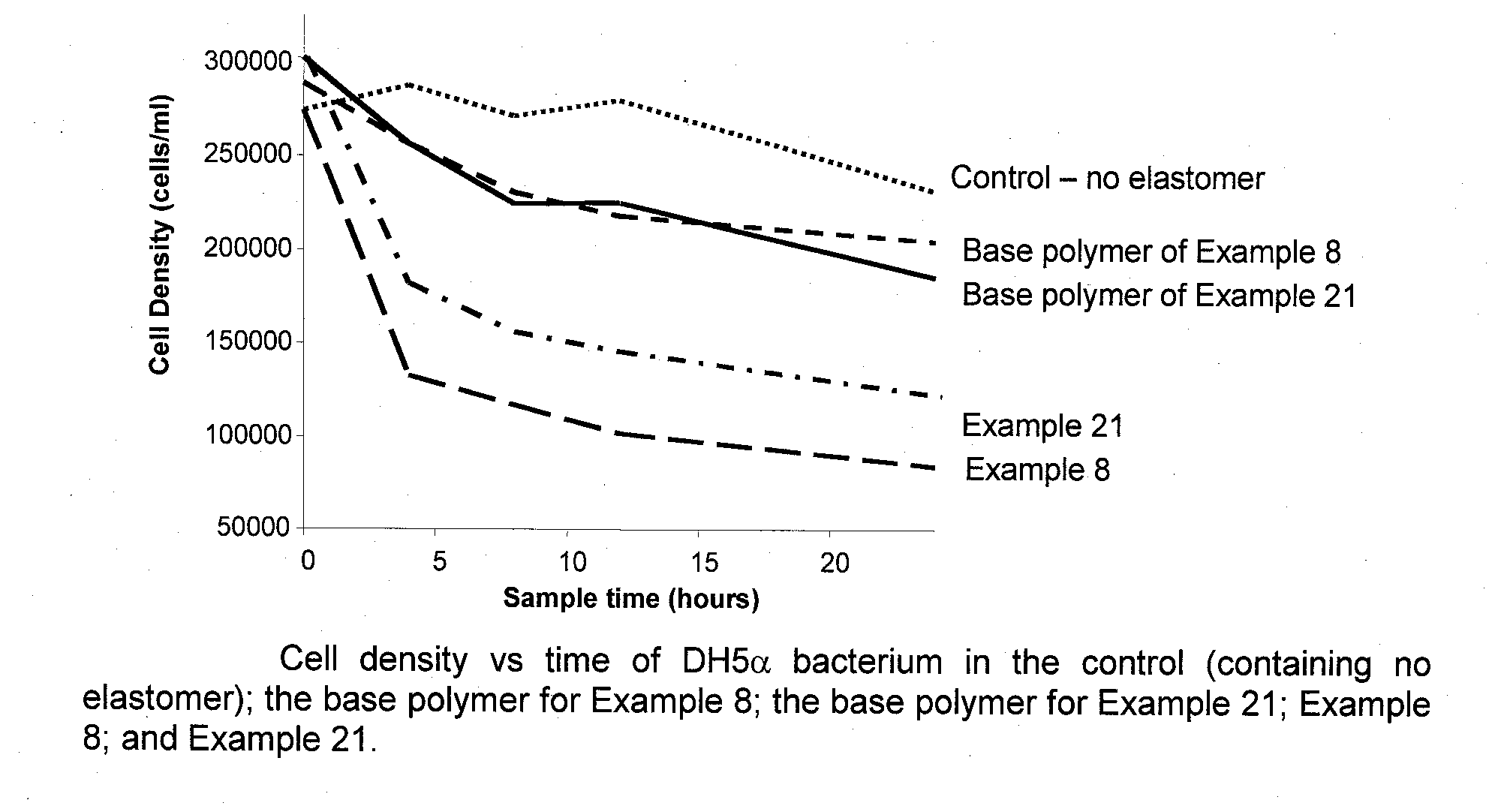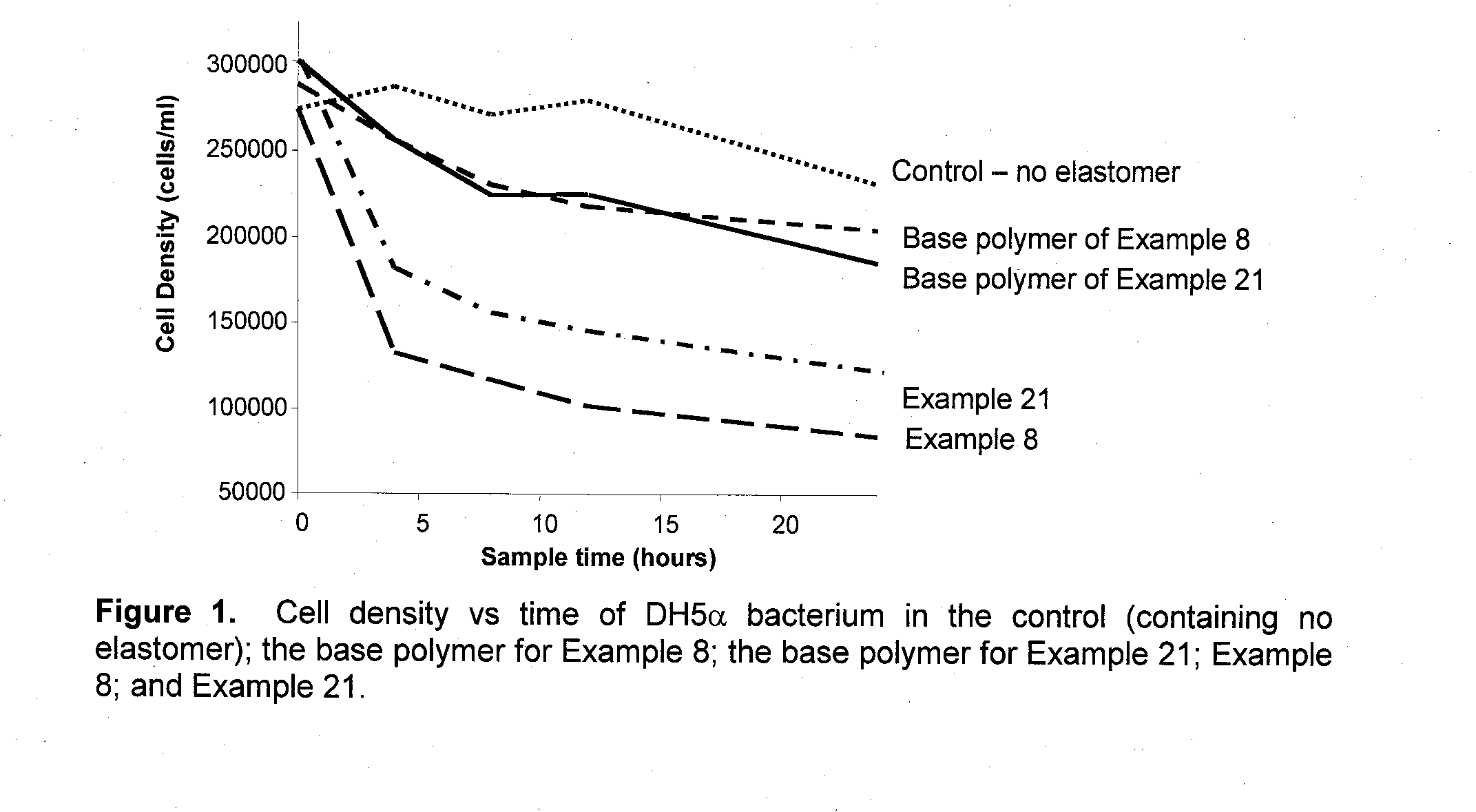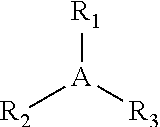Butyl ionomers for use in reducing a population of and/or preventing accumulation of organisms and coatings made therefrom
a technology of butyl ionomers and organisms, which is applied in the direction of antifouling/underwater paints, tyre parts, vehicle components, etc., can solve the problems of limited protection, material ineffectiveness, potential environmental risk, etc., and achieve the effect of preventing accumulation of organisms and reducing a population
- Summary
- Abstract
- Description
- Claims
- Application Information
AI Technical Summary
Benefits of technology
Problems solved by technology
Method used
Image
Examples
example 24.example 1
[0111]Example 24. Example 1 was mixed with Carbon Black N660 in a Brabender mixer at 60° C. and a rotor speed of 60 rpm for 15 minutes. The resulting material was molded at 100° C. for 5 minutes and its resistance to the growth of gram positive (Staphylococcus aureus, concentration ˜105) was tested in triplicate according to Japanese Industrial Standard JIS Z 2801:00 which is incorporated herein by reference. According to this method, the antibacterial activity is measured by quantifying the survival of bacterial cells which have been held in intimate contact for 24 hours at 35° C. with a surface of the article being tested. The antibacterial effect is measured by comparing the survival of bacteria on the article being tested with that achieved on a control article. In all experiments, the control article consisted of a polyethylene film. There was t least one log reduction of bacteria, displaying the antibacterial nature of carbon-black filled phosphonium ionomer composites to the ...
example 26.example 1
[0113]Example 26. Example 1 was mixed with Hi Sil 233 in a Brabender mixer at 60° C. and a rotor speed of 60 rpm for 15 minutes. The resulting material was molded at 100° C. for 5 minutes and its resistance to the growth of gram positive (Staphylococcus aureus, concentration ˜105) was tested in triplicate according to JIS Z 2801. At least one log reduction of bacteria, displaying the antibacterial nature of silica- filled phosphonium ionomer composites to the growth of gram positive bacteria.
example 27
[0114] The resistance of the ionomer formed in Example 24 to gram negative bacteria (Escherichia coli) was tested using the same procedure as outlined in Example 26. At least one log reduction of bacteria, displaying the antibacterial nature of silica-filled phosphonium ionomer composites to the growth of gram negative bacteria.
PUM
| Property | Measurement | Unit |
|---|---|---|
| Temperature | aaaaa | aaaaa |
| Fraction | aaaaa | aaaaa |
| Time | aaaaa | aaaaa |
Abstract
Description
Claims
Application Information
 Login to View More
Login to View More - R&D
- Intellectual Property
- Life Sciences
- Materials
- Tech Scout
- Unparalleled Data Quality
- Higher Quality Content
- 60% Fewer Hallucinations
Browse by: Latest US Patents, China's latest patents, Technical Efficacy Thesaurus, Application Domain, Technology Topic, Popular Technical Reports.
© 2025 PatSnap. All rights reserved.Legal|Privacy policy|Modern Slavery Act Transparency Statement|Sitemap|About US| Contact US: help@patsnap.com



